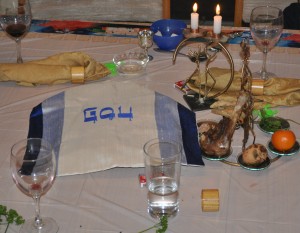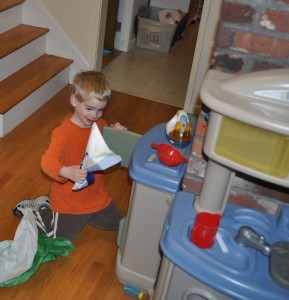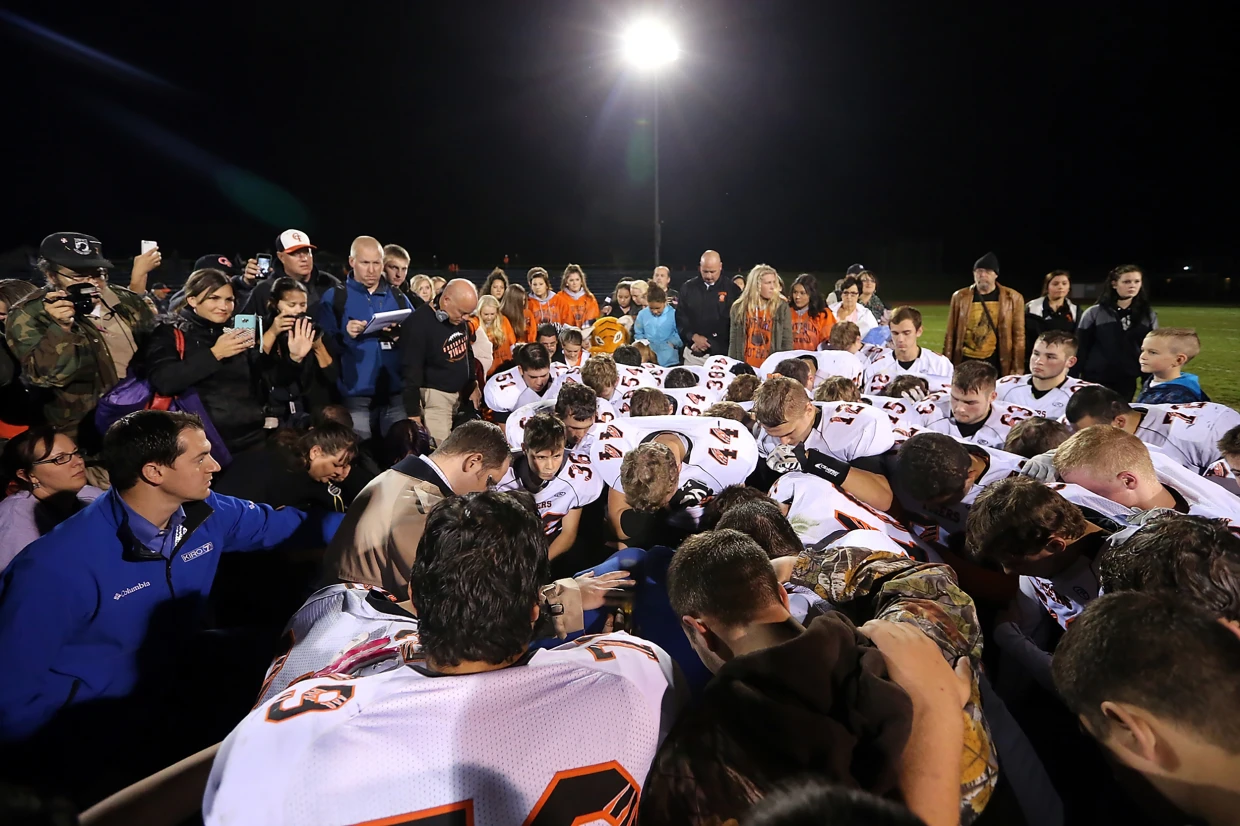April 11, 2012
My son snuggled into my lap as his pre-school classmates clustered around me. I had offered to read a book to his class. No big deal, right? But this wasn’t just any book. It was the day before Passover, and I had brought in a Jewish children’s book.
When I mentioned my upcoming visit to my mother, she asked if I were worried about crossing that line separating church from state. I was not that worried. My son’s preschool is private. Besides, is it promoting Judaism to read a book about Passover?
I wanted to share a bit of my son’s world with his classmates, and his teacher embraced my idea to visit with a book and some Passover food. So did the teacher in the neighboring classroom when she overheard our discussion. She said the children hear plenty about Easter and need to know about Passover.
The 1992 book I read, Mrs. Katz and Tush, by Patricia Polacco, is not just about Passover. It’s a multi-cultural, inter-generational story about a widow from Poland and the friendship she makes with a black boy who lives nearby. The boy, Larnel, brings Mrs. Katz a kitten as a present, and the widow agrees to keep the cat only if Larnel helps with it.
The girl next to me burst into giggles when I read about how the cat got its name, “Tush.” The kitten has no tail, and tush, well, is a Yiddish word that refers to the derriere. I grew up with a smattering of Yiddish words, but tush was foreign to most of my son’s class and I later learned, some of his school’s teachers. I realized I was not just sharing something about a holiday. I was sharing culture.
In the book, Mrs. Katz and Larnel grow close, and one day, the boy hears the yearning in his friend’s voice when she talks of Passovers past. He asks if he could have Passover dinner with her. She takes him with her to shop and tells him the story of Passover. Mrs. Katz tells Larnel that Jews, like blacks, once were slaves, too.
I winced inwardly when I read the next part about the angel that brought death to the houses of Pharoah’s people, but not the Jews because the angel “passes over” the Jews’ doors. The children, though, seem unperturbed by the chilling part of the Passover story. They moved closer to stare at the colorful illustrations of Mrs. Katz and Larnel eating matzo together.
After story time, I served the children matzo and haroset, a combination of apples, grape juice, cinnamon, raisins, and honey meant to resemble the mortar the Jews had to use when they worked as slaves. I told the children that my son helped me make the haroset, and Simon grinned as he spooned in mouthfuls rather than put it on his matzo.
Did I cross a line with this pre-school visit? No, I don’t think so. The teacher next door asked to borrow the book and read it to her class the same day. No preaching went on through the reading of a book. It was much different than the way I was treated when I was the only Jew in my rural Ohio school in the 1970s; a church volunteer visited weekly to preach a Bible lesson with a Christian focus. My parents got me excused. That isolated me and prompted questions from my classmates. They wanted to know why I didn’t stay. They wanted to know what made a Jew different.
My son’s young classmates perhaps now have a sense of what my peers did not at a much older age. These 4-year-olds know that people celebrate different holidays, and that is perfectly fine. Of course, to be fair, I have to ask myself this: How would I feel if a parent came in and read a children’s story about Easter and how it celebrates the resurrection of Jesus? If the book is sensitive and not preachy, I would be fine with it. My son can benefit from learning about other religions besides his own. I don’t fear that he will suddenly want to change religions. It’s okay if he learns that Easter is about more than just a chocolate bunny.
This blog post also appeared on The Christian Science Monitor’s new Modern Parenthood Blog. Find it here and feel free to comment, there, too.







I don’t think you crossed a line — you weren’t trying to “sell” anyone on Judaism; you were sharing a cultural ritual.
In my daughter’s progressive elementary school, some Jewish parent was in the classroom every Rosh Hashanah bringing a round challah and apples and honey. They also invited Chinese-American parents in to share Chinese New Year and African-Americans to share Kwanzaa. (I’m sure there were other holidays too, but those are the ones that I specifically remember.)
In her middle school, the school held its own (abbreviated) Passover seder for the whole 6th grade class — it fit in with their social studies theme for the year, ancient civilizations. For the winter holidays, they held a multicultural holiday night where the multipurpose room was filled with tables presenting items, food and stories from more holidays than I’d heard of — yes, Chanukah, Christmas and Kwanzaa, but also the Hindu holiday of Diwali, the Mexican tradition of Las Posadas, Iid Al-Fitr from Islam (hope I spelled that right), and winter solstice, among others.
I think it is terrific to share cultural traditions if it is done in an open, non-proselytizing way.
Hi, Ilana,
Hear, hear. I never really thought I crossed a line either, but sort of framed it that way to hopefully get people thinking. I wish people had done this kind of thing when I was in elementary school instead of the proselytizing I experienced. It would have been a meaningful experience for me and I suspect, the other kids. Your daughter’s experience sounds terrific. Our elementary school here, which my son will attend in a few years, does something similar as early as kindergarten, I’m told.
Sounds like your daughter’s middle school is very much on top of the idea of teaching kids about the world’s religions, something I wrote about last summer. You can read that piece here.
Again, thanks for your astute – and interesting comment!
Linda